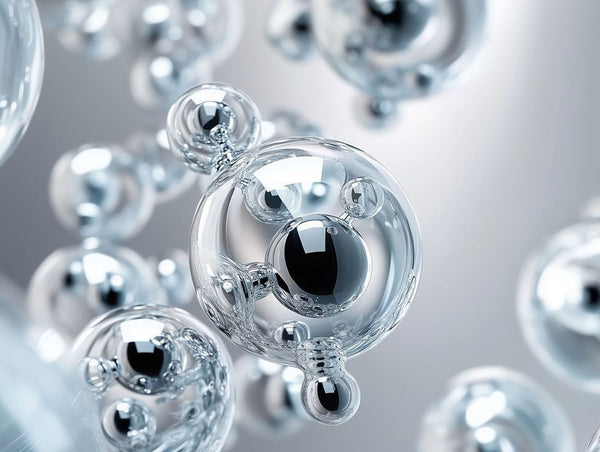In This Article
Understanding Early Menopause
Early menopause, also known as premature menopause, occurs when a woman's periods stop before the age of 40. It is important to note that menopause itself is a natural biological process that signifies the end of a woman's reproductive years. However, when menopause happens earlier than expected, it can bring about physical and emotional challenges.
Early menopause can have a significant impact on a woman's life, affecting her fertility, hormonal balance, and overall well-being. In addition to physical symptoms such as hot flashes, night sweats, and vaginal dryness, early menopause can also lead to emotional changes like mood swings, anxiety, and depression. Coping with these changes can be challenging, but with the right support and resources, women can navigate through this phase with resilience and strength.
What is Early Menopause?
Early menopause is typically defined as the cessation of menstrual periods for at least 12 consecutive months, before the age of 40. This means that a woman no longer releases eggs and is no longer able to conceive naturally.
It is important for women experiencing early menopause to consult with healthcare professionals to understand the implications of this transition on their overall health. Hormone replacement therapy, lifestyle modifications, and emotional support can all play a crucial role in managing the symptoms and consequences of early menopause.
Common Causes of Early Menopause
Early menopause can be caused by a variety of factors, including:
- Genetic predisposition
- Thyroid disease
- Rheumatoid arthritis
- Lifestyle choices
- Medical conditions like chemotherapy or radiotherapy
While it is not always possible to pinpoint a single cause, understanding these factors can shed light on why some women experience early menopause. By identifying the underlying causes of early menopause, healthcare providers can tailor treatment plans to address the specific needs of each individual, offering personalized care and support.
Distinguishing Between Early and Premature Menopause
It is important to distinguish between early menopause and premature menopause, as there are key differences between the two. Early menopause is a natural occurrence, but premature menopause is often caused by another underlying condition. Understanding the differences helps tailor treatment plans and provide appropriate support.
Key Differences Between Early and Premature Menopause
One of the key differences between early and premature menopause is the age at which it occurs.
Age: Early menopause happens before the age of 40, while premature menopause occurs before the age of 30.
Cause: Another significant difference is the underlying cause, as premature menopause is often associated with conditions such as premature ovarian failure.
Early menopause, though occurring earlier than average, is a natural decline in reproductive hormones and egg supply. Premature menopause, on the other hand, may be triggered by genetic factors, autoimmune diseases, or medical treatments like chemotherapy.
Similarities and Overlaps
Early and premature menopause both lead to the end of menstrual periods and reproductive abilities, with similar symptoms experienced in both situations. Women going through early or premature menopause may experience symptoms such as hot flashes, mood changes, and vaginal dryness.
What is Premature Ovarian Failure?
Premature ovarian failure (POF) is a condition that is closely related to early and premature menopause. It occurs when the ovaries stop functioning before the age of 40, resulting in a decline in estrogen and the absence of regular menstrual periods, and is characterized by the premature depletion or dysfunction of the ovarian follicles, which are responsible for producing eggs and releasing hormones. Premature ovarian failure affects a woman's fertility and hormone levels.
Women diagnosed with premature ovarian failure may experience a range of symptoms beyond infertility and hormonal imbalances. These symptoms can include hot flashes, night sweats, vaginal dryness, and mood changes. The emotional impact of POF can also be significant, as it may affect a woman's sense of identity and femininity.
How to Diagnose Premature Ovarian Failure?
Diagnosing premature ovarian failure typically involves a combination of:
- Blood tests to measure hormone levels
- Imaging tests such as ultrasound to assess the ovaries
- Genetic testing
Healthcare providers must conduct a thorough evaluation to determine the best treatment approach for each individual.
Relationship with Early and Premature Menopause
Premature ovarian failure is often used interchangeably with premature menopause due to the similar symptoms and implications for a woman's reproductive abilities. However, it is important to note that premature ovarian failure can occur at any age, while premature menopause specifically refers to women under the age of 30.
Despite the challenges posed by premature ovarian failure, there are various treatment options available to help manage symptoms and improve quality of life.
- Hormone replacement therapy
- Fertility treatments such as in vitro fertilization
- Counseling support
These are among the strategies that may be recommended to women dealing with POF. Individuals with POF need to work closely with their healthcare team to address both the physical and emotional aspects of this condition.
Causes of Early and Premature Menopause
The exact causes of early and premature menopause are still under investigation, but several factors have been identified as potential contributors.
Early and premature menopause can have a significant impact on a woman's overall health and well-being. It can lead to an increased risk of osteoporosis, heart disease, and cognitive decline. Understanding the underlying causes of this condition is crucial for effective management and treatment.
Genetic Factors
Genetics plays a significant role in determining the age at which a woman may experience menopause. Some women may have a family history of early menopause, indicating a possible genetic link.
Lifestyle and Environmental Influences
Lifestyle choices and environmental factors can also impact the onset of early and premature menopause. Factors such as smoking, excessive alcohol consumption, and certain chemical exposures may accelerate ovarian aging.
By promoting healthy habits and minimizing exposure to harmful environmental toxins, women can potentially delay the onset of menopause and reduce their risk of associated health complications.
Medical Conditions and Treatments
Certain medical conditions and treatments can lead to early or premature menopause. These include autoimmune disorders, cancer treatments such as chemotherapy or radiation therapy, and surgical removal of the ovaries.
Recognizing the Symptoms of Early Menopause
Early menopause is associated with a range of physical, emotional, and psychological symptoms that can greatly affect a woman's quality of life. Women need to be aware of these symptoms to seek appropriate support and guidance.
Early menopause, also known as premature menopause, can occur before the age of 40. While the average age of menopause is around 51, some women may experience the onset of menopausal symptoms much earlier, which can be challenging to navigate.
Physical Symptoms
Physical symptoms of early menopause can include;
- Hot flashes
- Night sweats
- Vaginal dryness
- Decreased libido
- Irregular periods
- Changes in bone density
These symptoms may vary in intensity and duration for each individual. Hot flashes, characterized by sudden feelings of warmth and flushing of the face and upper body, are one of the most common symptoms experienced during early menopause.
Changes in bone density are also a significant concern for women going through early menopause, as decreased estrogen levels can lead to an increased risk of osteoporosis.
Emotional and Psychological Symptoms
In addition to physical symptoms, women experiencing early menopause may also experience emotional and psychological changes. These can include:
- Mood swings
- Anxiety
- Depression
- Difficulty concentrating
- Memory lapses
The hormonal fluctuations during early menopause can impact neurotransmitters in the brain, contributing to these emotional symptoms.
Managing emotional and psychological symptoms often requires a holistic approach that may include therapy, lifestyle modifications, and in some cases, medication. Women need to prioritize self-care and seek professional help to address these aspects of early menopause effectively.
Conclusion
Early menopause is a complex phenomenon that can have a significant impact on a woman's life. By understanding the causes, symptoms, and differences between early and premature menopause, as well as the relationship with premature ovarian failure, women and healthcare professionals can provide the necessary support and treatment options. It is important to remember that early menopause is not a choice but a natural occurrence that can be managed with the right guidance and support.



























 DOWNLOAD NOW
DOWNLOAD NOW
